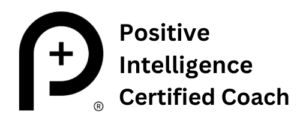 In case you’re just joining us, I’m mid-way through a series of posts on rebooting every major area of my life after the holidays, including food, shelter, mind, body and spirit.
In case you’re just joining us, I’m mid-way through a series of posts on rebooting every major area of my life after the holidays, including food, shelter, mind, body and spirit.
I’m particularly excited about today’s topic — “mind” — because it circles back to a piece I wrote two months ago, almost to the day, titled “Meditating Without a License: Why It’s Time to Pay for Training.” This is the first of a two-part segment.
Dialing Back: Why Meditate in the First Place?
I’ll admit it. My accidental (and non-denominational) spiritual awakening in 2010 is what finally got me to take meditation seriously.
But I had been fascinated by the topic ever since I saw a National Geographic cover a few years earlier picturing a monk whose head was covered in electrodes. The article detailed neuroscientists’ findings on meditation’s impact on health and well-being.
Most people are aware, in theory at least, that meditation can help reduce stress and provide an avenue for deeper insight if practiced regularly.
Brain scans and other studies of Tibetan monks and western meditators have convinced scientists that the impact extends even further to a healthier immune response, mental health improvements, better decision making, and a happier outlook on life more generally.
I’ll add my own experience to this list: I yell at my kids a lot less since I’ve been meditating (and regressed again when my meditation was more sporadic over the holidays).
But most people still associate meditating with sitting on a mountain top far removed from the real world, or at least twisted into the lotus position while chanting amidst burning incense.
“That’s fine for some people,” you may have thought, “but I’ve got work to do.”
New and Unlikely Cheerleaders for Mindfulness
The good news is that fresh voices are breaking through–some of them from unlikely corners–making the case for mindfulness meditation. Here in the Washington, D.C., area, perhaps the best example is Ohio Congressman Tim Ryan.
It was my husband who told me recently (clearly surprised) that Ryan was on one of the TV news programs talking about the importance of mindfulness and meditation. He’s even written a book about it, A Mindful Nation: How a Simple Practice Can Help Us Reduce Stress, Improve Performance, and Recapture the American Spirit.
Congressman Ryan is preaching to the choir with me. What I found even more interesting was that my husband, a retired government suit guy, noticed. If it had been the Dalai Lama on the screen, he probably wouldn’t have paid quite as much attention (“the bald man in red robes isn’t like me” is a common reaction, and can be forgiven).
If you’re still not convinced that meditation is worth considering, read Time Magazine‘s “How to Get Smarter, One Breath At A Time” or the Washington Post‘s “Meditation Gives Brain a Charge“. OK, stepping off the soap box now.
The Answer to “I Don’t Have Time to Meditate”
Over the course of several months, I had worked up to meditating 30-40 minutes a day. I thought it still wasn’t enough, since somewhere I had heard that Deepak Chopra meditates two or three HOURS a day (he gets up at 3:00 a.m. — ugh).
So when the schedule got crowded over the holidays, I would skip meditation if I couldn’t rouse myself out of bed early enough to log my 30-40 before the kids got up. Plus, I had all that other angst about whether I was doing it right in the first place.
I told myself I’d get back on track after I found a teacher when life settled down. The irony, of course, is that meditation is most important when life is stressful.
Finding a teacher felt daunting too, though. For one thing, it seemed counterproductive to brave Washington, D.C. traffic to get to a meditation session. (Did you hear? D.C. was recently designated the most traffic congested metropolitan area in the country. We’re #1!)
Got Ten Minutes?
The universe, once again, dropped the solution in my lap, or at least in my inbox when Brian, a friend and blog follower, forwarded a TED Talk* by an intriguing fellow named Andy Puddicombe.
Just how intriguing is Andy? Well, he’s a very fit British guy with a shaved head, probably in his early 40’s, ordained as a Buddhist monk in the Himalayas in his twenties, served as a monk in several countries, gave the robes back after doing his time, then topped it all off with a degree in Circus Arts (he says being a monk and a circus performer aren’t that different).
He’s made it his life’s work to “demystify meditation for the masses.” All it takes, he insists, is 10 minutes a day. Check out Andy’s TED Talk, “All it Takes is 10 Mindful Minutes,” by clicking here (even if you’re not interested in meditating, the juggling is enough entertainment on its own).
My next post will describe how I’ve used Andy’s program over at getsomeheadspace.com to reset my meditation practice.
Hope you’ll be back! And let me know what you think of Andy’s TED talk!
*TED (Technology, Education, Design) is a non-profit “devoted to Ideas Worth Spreading”. Its video podcasts on more than a thousand topics have been viewed by over a billion online viewers around the world.


